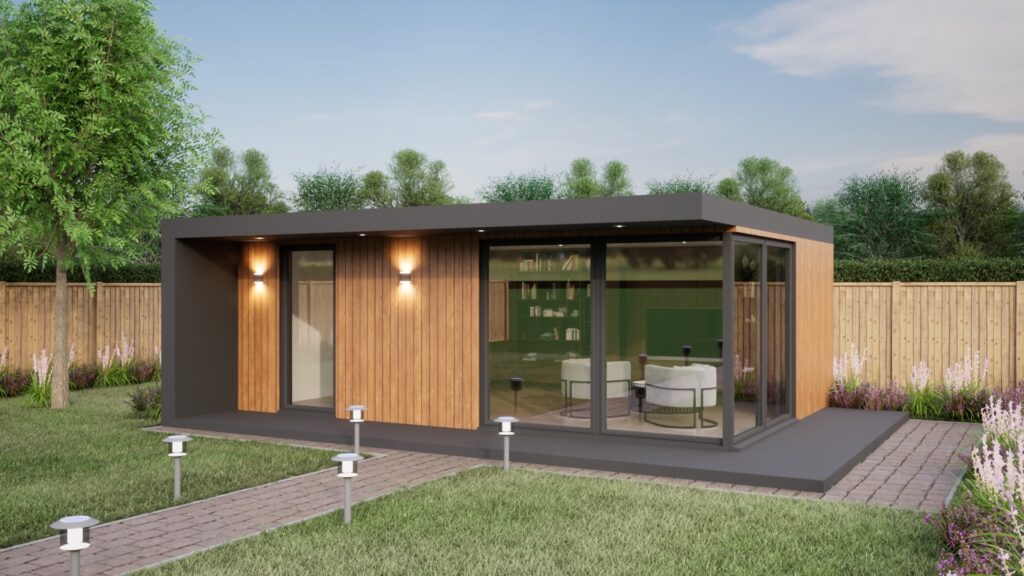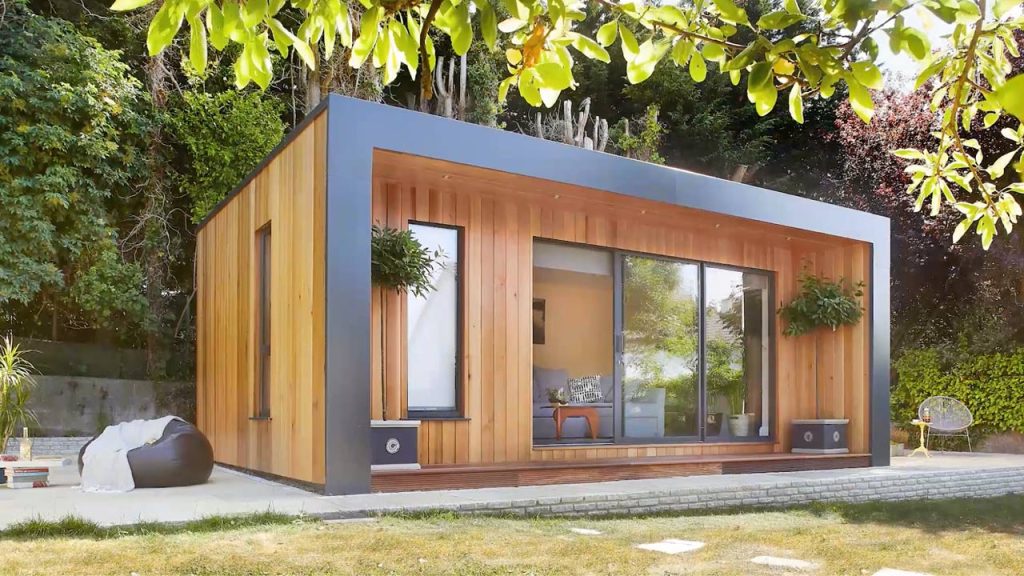Handy Reasons For Planning Permission For Garden Offices
Handy Reasons For Planning Permission For Garden Offices
Blog Article
What Authorizations Are Required To Build Garden Rooms And Similar Structures In Conservation Zones?
In conservation zones, there are particular restrictions that are in place to protect the look and feel of the area. Here are the key aspects to be considered when planning permission is required within conservation zones: General Restrictions:
In conservation areas planning permission is required for any building or extension that falls under permitted development. This is the case for garden sheds as well as other outbuildings.
Size and Scale
All structures of any size can require approval for planning if they are considered to alter the nature of the conservation area. In designated zones, there are more strict limitations on the size and design of new structures or extensions.
The location of the property:
Planning permission is more likely to be required for extensions and buildings located to the front or sides of the property. If rear structures are seen from public areas or affect the character of an area They may require planning permission.
Materials and Design
Design and materials are important in conservation areas. The choice of materials for a extension or building has to be in line with the historical or architectural significance of the site. These requirements will require permission for planning.
Demolition:
Planning permission is generally required in conservation zones to ensure that the changes made are in keeping with an region's distinct character.
Height Restrictions
There are more strict height restrictions in conservation zones. If a building is greater than 2.5 metres It is highly likely that the planning permit will be required.
Impact on Surroundings:
Planning permits are required for any construction or extension that will have a significant effect on the look or the setting of an area of conservation. This includes the views from and to the area.
The Building is used to:
Even if a garden area or outbuilding is within permissible dimensions, the intended use (e.g., as a home office, studio, or living space) could require planning permission due to potential changes to the property's uses.
Changes and expansions
Planning permission will be required for extensions that go beyond the size or volume limit, or alter the appearance of exteriors. This includes conservatories as well as other major changes.
Curtilage Structures:
Constructions that are located within the curtilage an listed building within a conservation zone must always be approved for planning. This applies to new extensions, outbuildings or modifications.
Protected trees
Trees in conservation areas are usually protected. In the event that your proposed project will affect trees, you might need to obtain additional permissions including the tree work permit along with a planning permit.
Local Authority Guidelines
Local planning authorities could establish particular guidelines and limits for every conservation area. They may include specific guidelines on what is acceptable and what isn't and adapted to the specific nature of the region.
Planning permission in Conservation Areas requires an assessment of whether the proposed gardenroom, conservatory, outhouse or garden office could have an impact on the architectural and historic characteristics of the conservation zone. Contacting your local planning authority before beginning the process of planning is crucial to ensure that your plan conforms to all relevant laws and guidelines. Take a look at the top do garden rooms need planning permission for more tips including costco garden office, garden room conservatory, outhouse builders, garden room permitted development, do i need planning permission for a garden room with toilet, outhouse, myouthouse, costco outbuildings, garden room or extension, gym outhouse and more.
What Planning Permission Is Required For Gardens, Rooms Etc. With Regard To The Impact On The Environment?
Planning permission can be affected by the environmental impact of conservatories, garden rooms and outhouses. Consider the following environmental factors:
If the proposed construction will affect local wildlife habitats like hedgerows, trees, or ponds, permits for planning are required. It may be necessary to conduct an ecological survey to reduce and assess the impact.
Habitats, Protected Species, and the Environment:
Planning permission is required when the site contains endangered species (e.g. bats, newts, etc.)) or is situated in or near habitats that are of scientific interest (e.g. Sites of Special Scientific Interest: SSSI). To safeguard them, specific measures must be implemented.
Tree Preservation Orders:
The planning permission must be obtained when the proposed structure requires removal of trees or the alteration of trees that are protected by TPOs. The local council will assess the impacts, and could demand that replacement plants be planted or some other form of mitigation.
Flood Risk and Water Management
Planning approval is required for developments within flood-prone zones. It may be necessary to conduct a flood risk assessment in order to make sure that the structure isn't susceptible to flooding and has drainage solutions.
Sustainable Construction Practices
To ensure that sustainable materials and construction methods are used permits for planning may be required. It is important to consider energy efficiency, insulation and carbon footprint.
Drainage of surface water runoff
A key consideration to consider for the environmental is how the new structure will impact drainage and runoff of surface water. Planning permission ensures proper drainage systems to prevent flooding and waterlogging are in place.
Soil stability and soil stability
A planning permit is needed if the proposed construction may affect the stability of the soil or land. This can include issues like a soil erosion or subsidence, especially on steep slopes.
Air Quality:
Any development that could have an impact on local air quality (such as near industrial zones or major roads) approval for planning is required. The level of air pollution must be within acceptable limits and mitigation measures must be implemented.
Noise Pollution:
Planning permission is required when the garden area or any extension of it, is likely generate significant noise. The local authority must evaluate noise levels, potential impacts on neighbors as well as the surrounding environment.
Waste Management:
The proper management of waste both during and after construction is vital. Planning permission is required to ensure that the proper provisions are made for waste disposal and recycle while minimizing the environmental impact.
Energy Efficiency
Planning permission could be accompanied by conditions for energy efficient technologies, such solar panels or high-performance glazing. This reduces the impact of the new building on the environment.
Environmental Regulations Compliance:
Developments have to be compliant with national and local environmental regulations, like the UK Environmental Protection Act. Planning approval ensures that all regulations are met in addition to the development being sustainable for the environment.
Planning permission for a garden office or conservatory, an outhouse or extension should take into account a variety of environmental implications. Early consultation with the local authority is crucial to understand the responsibilities of the proposed development and to ensure that the development is in compliance with the applicable regulations and is ecologically responsible. View the recommended summerhouse heaters for more tips including garden rooms in St Albans, do you need planning permission for a garden room, what size garden room without planning permission, garden office hertfordshire, garden room or extension, garden room, garden rooms in St Albans, costco garden buildings, garden rooms brookmans park, garden room and more.
What Kind Of Permission Do I Require For Gardens, Etc. With Regard To Agricultural Lands
If you're thinking about building gardens rooms, conservatories, outhouses, extension of gardens, or garden offices on agricultural land There are certain conditions and requirements for planning permission to consider. Here are a few important points:
Agricultural land is typically designated for agriculture and other related activities. Changing this land’s use to residential, or even for garden structures usually requires approval from the planning department. This is due to the fact that it is a change from its original purpose as an agricultural one.
Permitted Development Rights:
Land for residential and agricultural use have various permitted developments. In certain cases agricultural structures can be constructed without planning permission. These rights, however, are only applicable to structures used for farming.
Size and Scale
The dimensions and the size of the structure proposed may determine whether a permit for planning is needed. More likely is that large buildings, or those covering an extensive portion of the property will need planning permission.
The impact of agricultural use
More likely is that planning permission is required if a new structure interferes in the agricultural use of land. For example, reducing the area available for crops or animals.
Green Belt Land:
If the land is also designated Green Belt, there are further restrictions to stop the spread of urban sprawl as well as preserving open space. Planning permission is usually required for any new development on Green Belt land.
Design and Appearance
The design and appearance must reflect the rural nature of the region. Planning permission will ensure that the proposed structure doesn't negatively alter the natural landscape.
Environmental Impact:
Any building project on land used for agriculture needs to consider the environmental impacts. A study of the environment may be required for planning approval to ensure any new construction will not cause harm to wildlife habitats and ecosystems in the area.
Near Existing Buildings
The proximity of a garden area or office that is planned to agricultural facilities could impact the requirements for planning. Structures constructed near the existing structures of a farm may be considered differently than those located within open fields.
Access Infrastructure
It is important to take into account the effect on infrastructure, like roads, water and waste management. If you seek planning permission the city will assess whether the infrastructure can support the new building.
Use Class Order
Planning law defines specific types of land that are suitable to be used for agricultural purposes. Planning permission is typically required to change the use classification of a building to one that does not fall under the agricultural category.
Local Planning Policies:
Local planning authorities have specific policies for agricultural land. These policies will determine whether or not planning permission for non-agricultural structures is granted by taking local development plans and community requirements into consideration.
National Planning Policy Framework
In the UK National Planning Policy Framework is a framework which provides guidelines for the development of land and its use. The NPPF is used to evaluate the use of planning permission for structures constructed on agricultural lands. It emphasizes the sustainable rural development and also protects these areas.
In short the simplest way, a permit for planning is required to permit the construction of greenhouses, garden rooms, outhouses and extension of garden offices on agricultural land. This permission is necessary in order to make sure that land use is changed and to comply with the local and national policies. Contacting the local planning authority is essential to establish the exact requirements and get the required approvals. View the most popular what is a garden room uk for site examples including outhouse, garden room conservatory, luxury outhouse, garden room, best electric heater for cabin, garden outhouses, costco outhouse, outhouse garden rooms, garden room or extension, outhouse buildings and more.